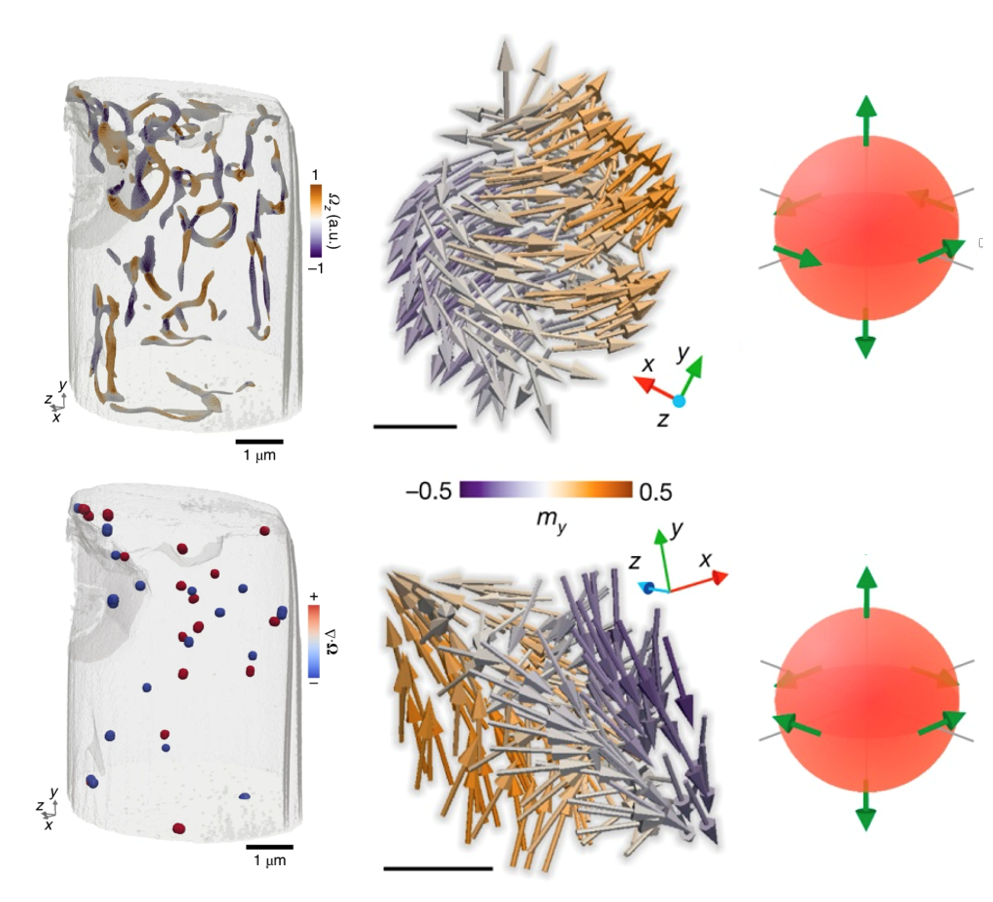Insights into magnetic materials with 3D imaging
Magnet-based devices form the basis of renewable energy, provide key components to the automotive industry, and provide the backbone for data storage in the "cloud". Therefore, there is significant research into gaining a better understanding of the fundamental properties of magnetic materials and in developing new magnetic devices with improved performance. With advances in magnetic imaging, we have determined with high spatial resolution the internal magnetic structure of micrometre-sized magnetic systems. Our results have led to breakthroughs in the understanding of magnetic materials and we are now developing new ideas to create unique properties such as curvature-induced anisotropy and magnetochirality.
Vanishing magnetization
Over 50 years ago, it was predicted that magnetic singularities called "Bloch points" exist where the magnetization of the material is locally zero. In our first realization of 3D magnetic imaging, we obtained the 3D magnetisation configuration in a GdCo2 pillar with 100 nm spatial resolution [1, 2]. The magnetic motif we uncovered consisted of a number of fundamental magnetic structures, including domain walls and vortices (see Fig. 1). Thanks to the high spatial resolution of our measurements, we could observe how these structures formed a complex network within the sample and, notably, the presence of several "Bloch points", which have never been directly observed before.

3D Magnetic Movie
Control and observation of the dynamic response of magnetic materials with a 3D magnetization distribution is important both for fundamental understanding and for technological applications. By combining magnetic laminography with a pump–probe experimental setup, we have imaged the magnetization dynamics within a 3D magnetic microdisc in response to an applied RF magnetic field [3]. As illustrated in Fig. 2, we identified two main types of magnetization dynamics: the breathing mode of a central magnetic domain involving domain wall motion and the dynamics at the edges of a uniform magnetic domain.

References
- Three-Dimensional Magnetization Structures Revealed with X-Ray Vector Nanotomography
C. Donnelly, M. Guizar-Sicairos, V. Scagnoli, S. Gliga, M. Holler, J. Raabe, L.J. Heyderman, external page Nature 547, 328 (2017) - Experimental Observation of Vortex Rings in a Bulk Magnet
C. Donnelly, K.L. Metlov, V. Scagnoli, M. Guizar-Sicairos, M. Holler, N.S. Bingham, J. Raabe, L.J. Heyderman,
N.R. Cooper, S. Gliga, external page Nature Physics 17, 316 (2021) - Time-Resolved Imaging of Three-Dimensional Nanoscale Magnetization Dynamics
C. Donnelly, S. Finizio, S. Gliga, M. Holler, A. Hrabec, M. Odstrčil, S. Mayr, V. Scagnoli, L.J. Heyderman,
M. Guizar-Sicairos, J. Raabe, external page Nature Nanotechnology 15, 356 (2020)